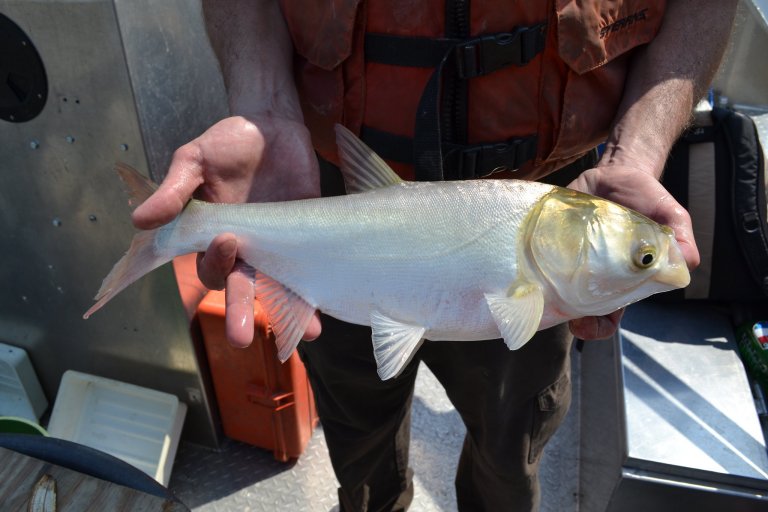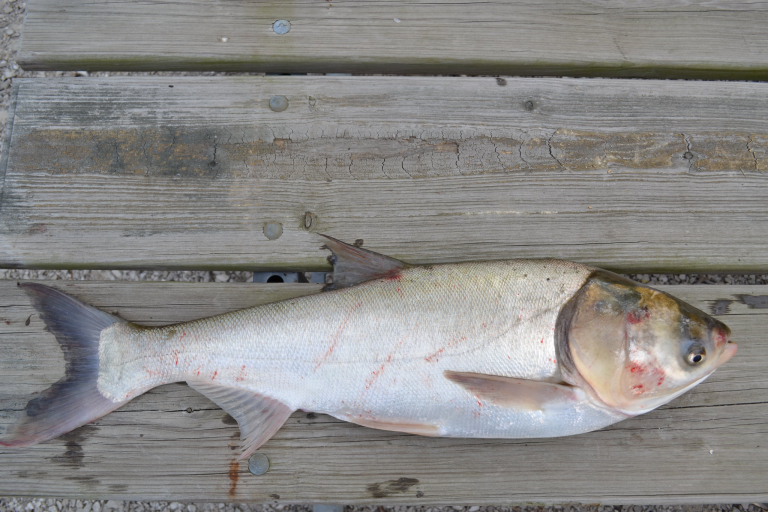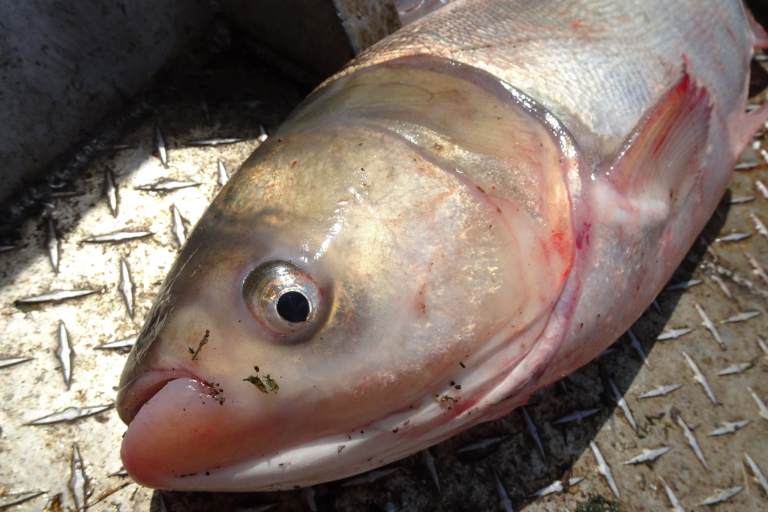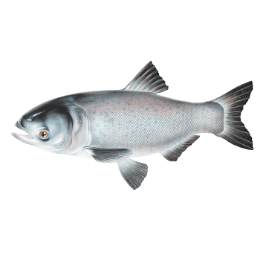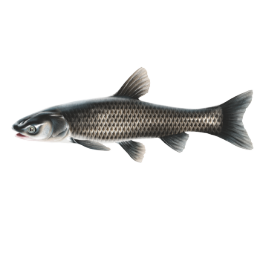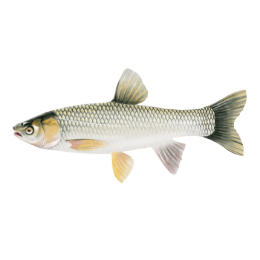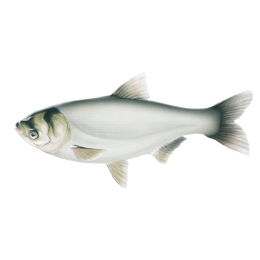
Silver Carp can jump 9 feet or more out of the water when startled by boat engines. This poses a hazard for anglers, boaters and other recreational users. This high flying, jumping invader are a schooling species and can be found in large numbers.
Physical Description
Silver Carp are deep-bodied, or wide, with a moderately large and broad head encompassing just under one third of their body size. They have a toothless upturned lower jaw and eyes are located below the axis of the body. Their body is silver with a slate gray head and dorsal surface and white belly with a keel extending from the anal fin to the throat. They are closely related to Bighead Carp and have been known to hybridize (cross-breed) with that species and produce viable, reproductive offspring.
Preferred Habitat
Silver Carp prefer habitats in the standing waters of rivers, canals and lakes, tolerating water temperatures from 43 to 82° Fahrenheit.
Diet
Silver Carp feed primarily on phytoplankton and can out-compete many native fish juveniles. They can efficiently strain suspended material from the water with specialized gill rakers that resemble sponge-like plates. Like the Bighead Carp, they lack a true stomach which requires them to feed almost continuously.
Size
Silver Carp mature in 2 to 4 years and commonly weigh 20 pounds. When older, they can reach a maximum size of more than 80 pounds.
Quick Facts:
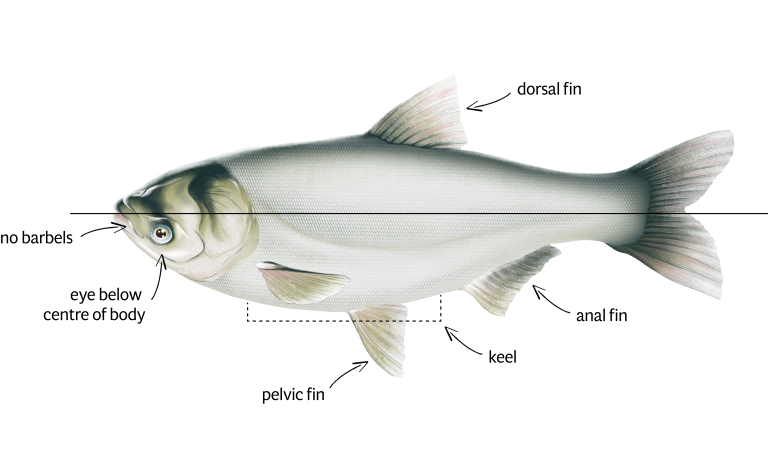
Origin: Large rivers, canals and lakes in eastern Asia from southern Russia and North.
Diet: Phytoplankton
Life span: 15-20 years
Size: Maximum of more than 80 pounds and nearly 4 feet in length.
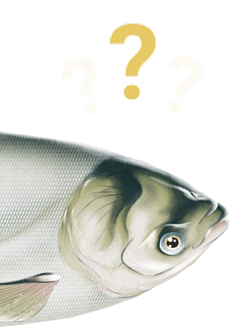
Did you know?
Also called “flying carp” because they can jump three or more meters (eight to nine feet) out of the water when frightened by boat engines.
Silver Carp lack a true stomach and feed continuously.
